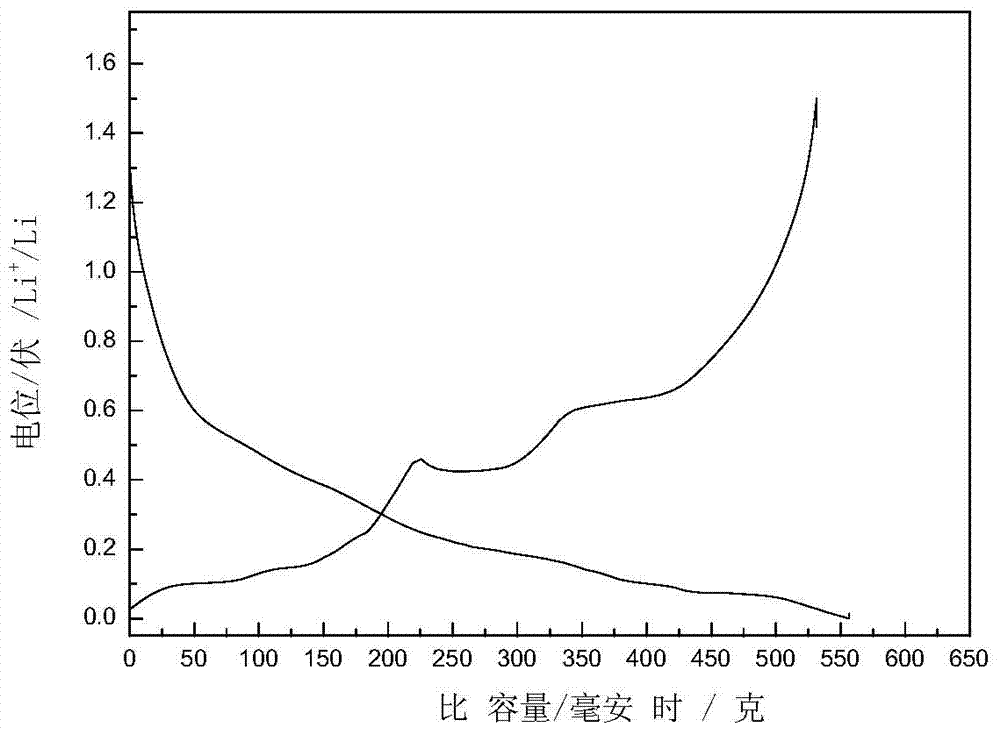Method for preparing germanium-based cathode material for lithium ion battery by adopting carbothermic reduction method
A technology for lithium ion batteries and negative electrode materials, which is applied to battery electrodes, secondary batteries, circuits, etc., can solve the problems of poor material capacity retention, cumbersome preparation steps, and difficulty in production amplification, so as to reduce production costs and simplify production steps. , the effect of increasing energy density
- Summary
- Abstract
- Description
- Claims
- Application Information
AI Technical Summary
Problems solved by technology
Method used
Image
Examples
Embodiment 1
[0026] Step 1: Put 10g of germanium dioxide (GeO 2 ), 7g graphite, and 12g coal pitch, ball-milled in 100ml ethanol solution for 60 hours, and heating to extract the ethanol solution to obtain the precursor of pitch and graphite mixed carbon-coated germanium dioxide;
[0027] Step 2: Place the precursor prepared in step 1 in a high-temperature furnace, raise the temperature at 5°C / min to 900°C under an argon atmosphere, sinter at high temperature for 5 hours, and then naturally cool down and cool down to form a lithium-ion battery prepared by carbothermic reduction of the present invention Use germanium-based anode material.
Embodiment 2
[0030] Step 1: ball mill 10g germanium dioxide, 7g graphite, and 12g coal pitch in 100ml ethanol solution for 60 hours, and heat and extract the ethanol solution to obtain a precursor of pitch and graphite mixed carbon coated germanium dioxide;
[0031] Step 2: Place the precursor prepared in Step 1 in a high-temperature furnace, raise the temperature at 5°C / min to 800°C under an argon atmosphere, sinter at high temperature for 5 hours, and then naturally cool down and cool down to form a lithium-ion battery prepared by carbothermic reduction of the present invention Use germanium-based anode material.
[0032] A 50-week cycle test was carried out on the material prepared in Example 2, and the mass specific capacity was always maintained above 550mAh / g.
PUM
| Property | Measurement | Unit |
|---|---|---|
| Average roughness | aaaaa | aaaaa |
| Thickness | aaaaa | aaaaa |
Abstract
Description
Claims
Application Information
 Login to View More
Login to View More - R&D Engineer
- R&D Manager
- IP Professional
- Industry Leading Data Capabilities
- Powerful AI technology
- Patent DNA Extraction
Browse by: Latest US Patents, China's latest patents, Technical Efficacy Thesaurus, Application Domain, Technology Topic, Popular Technical Reports.
© 2024 PatSnap. All rights reserved.Legal|Privacy policy|Modern Slavery Act Transparency Statement|Sitemap|About US| Contact US: help@patsnap.com










